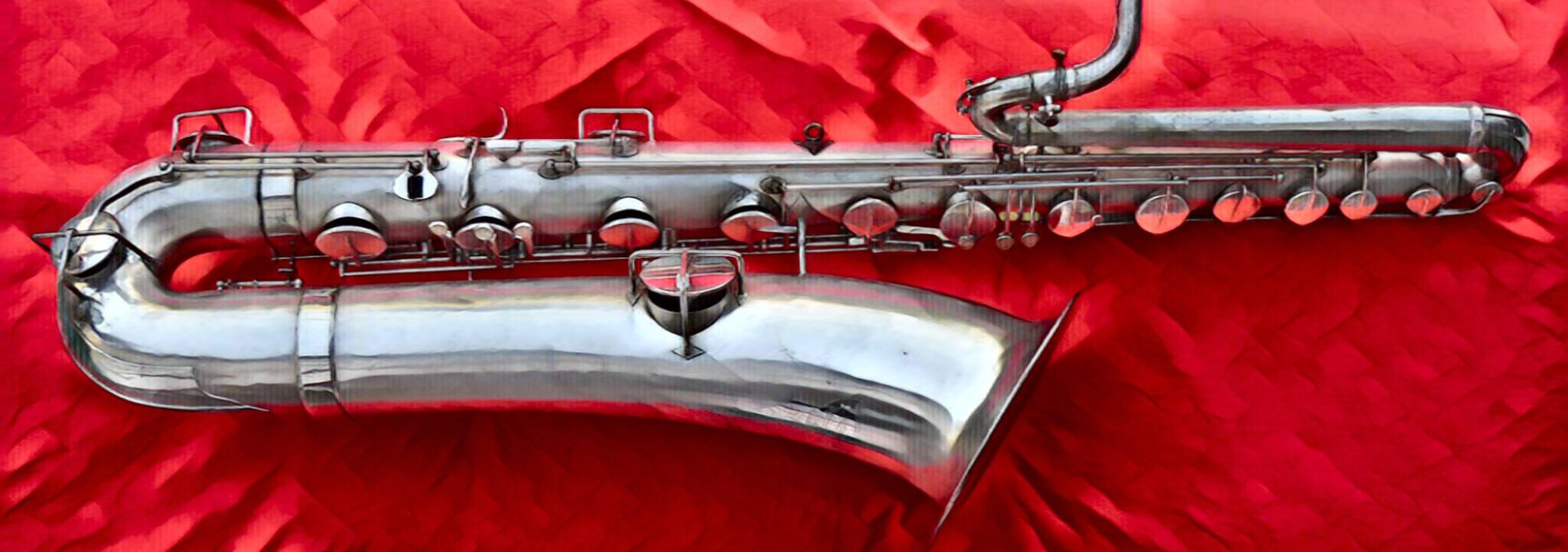Both Canada and the United States had their national holidays this past week. Therefore, if you live in North America, there’s a good chance the city in which you live held a parade.
One thing that is instantly recognizable in a parade, is the sousaphone. This forward-pointing-tuba is a hallmark of the marching band. However, the sousaphone might have had some competition for attention, if the following invention had caught on.
In January 1949, Leonard L. Gilcrease, of Hanford, California, applied for a patent for something that he called a Megaphone For Wind Instruments. This megaphone would turn woodwinds like clarinets, into instruments that looked like the sousaphone’s earlier cousin: the hélicon.

Source: Google Patents
The purposes of Gilcrease’s invention, as stated throughout the patent application, include the following:
- To overcome the tonal defects (his words, not mine) of instruments like the clarinet;
- To increase the sound of instruments that have almost no ability to increase their own sound, by confining and projecting it in a particular direction;
- To allow access to keys and tone holes, but have no real loss of sound through these access points;
- To ensure that the musician has access to the keys over the full range of the instrument;
- To hold the horn in place with clips, which attach the instrument to saddles within the casing;
- To provide a hinged cover, which allows the instrument to be removed if necessary;
- To allow the instrument to be played with the casing worn over the shoulder, like a sousaphone, or hélicon.
Now in theory, this should have been an invention that had legs. Check out how Gilcrease introduced his idea in the patent application:
The present invention relates to improvements in a magaphone for a wind instrument, and it particularly relates to an apparatus which will increase the sound of wind instruments of narrow shape. Such instruments have little tone volume due to the lack of a large instrumental body. Typical of such instruments are the flute and clarinet.
Many instruments are provided with a body which will increase the sound volume. Such instruments are, among others, the trumpet, the trombone, and the saxophone.
Source: Google Patents
That said, theory doesn’t always translate well into real world situations. When was the last time you saw a clarinet, oboe, or other tubular-shaped, narrow instrument, encased in a megaphone? My guess: NEVER.
My guess is that Leonard Gilcrease was a clarinet player, who was frustrated by being drowned out by other instruments. (Trumpets, trombones, and saxophones come to mind.) 😈
It’s not surprising that this invention didn’t gain a foothold in the classical world—although the saxophone would usually not be a big problem for clarinet players there. Perhaps marching or military bands might have embraced it, but honestly, the contraption did look rather complicated. The Clarinet Tone Transformer or Shastock Clarinet Megaphone, both from the 1930s, were much simpler by comparison. 😉
Then there are the logistics which complicate things slightly. How do you store your instrument? How do you dry it after playing it? Is it really safe to suspend you über expensive clarinet in this casing?
My guess is that this megaphone casing for woodwinds, didn’t gain any traction. Maybe I’m wrong. If I am, please chime in and give an example of how this was used. I think it would be very interesting.




I don’t know what’s going on here. I left a reply, but it isn’t here. The same thing actually happened to me on the Woodwind Forum. I replied to a thread, but it isn’t there either. :wtf:
Anyways… I’m trying to remember what I wrote. :scratch: It had something to do with a low A extension on a baritone sax. I think I was asking the question, if we lengthen a low Bb baritone by 6″, we can play a low A while fingering a low Bb. How would this device not in effect change the length of the clarinet’s (or whatever other instrument gets place into the casing) body?
Helen,
That is half of the problem. Any megaphone that is tight enough around the clarinet to effectively focus the sound will also be coupled to it acoustically and extend the effective wavelength, lowering the pitch.
The other half is that sound radiates from a clarinet diffusely or incoherently (I’m talking about phase, not the sobriety of a second-liner 😉 ) It would be nearly impossible for such a narrow cone to focus the sound waves along the axis; instead they would tend to bounce back and forth and possibly cancel each other like a mute in the bell of a brass-wind.
paul
It reminds me of an Escher Drawing it looks good on paper But it just doesn’t work in real life. :bang: :scratch:
Mark
http://eschersite.com/EscherSite/MC_ESCHER_DRAWINGS.html
Hi Helen,
My guess is that even in theory this idea is preposterous.
Mechanically extending one resonant tube with another only creates a longer resonant tube. That’s not a new “theory,” it’s just a hack. :scratch:
Designing an instrument such that it reliably constrains a mass of air and yet couples that resonating air mass with the surrounding atmosphere is more a matter of aerodynamics than wishful thinking. Boehm didn’t just drop trou’, squat down, and “make” a clarinet. There was a lot of empirical testing that went into that design. Helmhotz’s theories came after there was something tangible to observe and theorize about. 😉
Peace,
paul